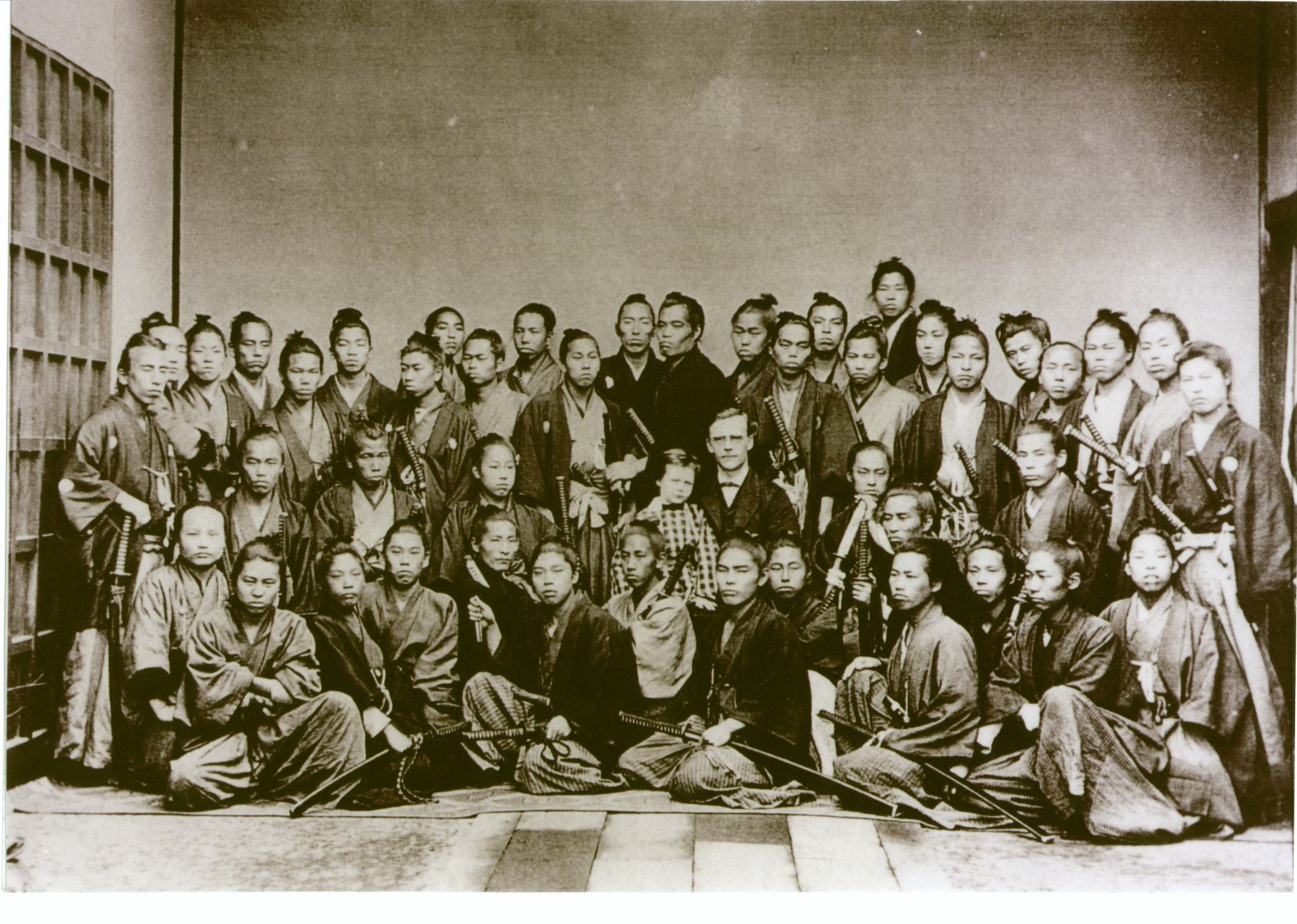This week, we cover the major issues of the new government. Who’s in charge? What do they want to do? And what could possibly go wrong if we just take half the leadership off for a two year trip?
Listen to the episode here.
Sources
Nish, Ian, ed. The Iwakura Mission in America and Europe: A New Assessment.
Pyle, Kenneth. Japan Rising.
Umegaki, Michiko. After the Restoration.
Images







Where is the Meiji Emperor in the photo with Verbeck and his daughter? I would have imagined identifying the emperor would have been obvious by the sitting arrangements for the photo.
—M@, [email protected]
So I did a bit more digging because I was sure I’d seen something about Emperor Meiji being in that photo. Turns out he’s not (my mistake, and I apologize) but the truth is way more interesting and WAY more bonkers.
The man who is sometimes thought to be emperor Meiji (front row, kneeling, directly in front of Verbeck in the white gi) is actually Omuro Toranosuke, a Choshu samurai who LOOKED a lot like the emperor physically. There is apparently a completely insane conspiracy theory that Omuro killed and replaced the Emperor because the original Prince Mutsuhito was too much of a sissy to go along with the demands of the shishi.
So yeah, I’ll be editing the photo description; thank you for encouraging me to dig harder and helping me find this INSANE story.
Gee, thank you for the reply. (BTW, I have two podcasts I never miss and yours is one of them. Your long series are fantastic, e.g., the current one covering the Meiji Restoration and the Rain of Ruin. I enjoy and benefit from your efforts tremendously. Thank you.)
According to my Japanese wife (named Omuro) emperor Meiji (no1) was lefthanded while Omuro was raighthanded and that emperor Meiji (no2) was righthanded. Food for thought, no?
First of all, thank you for these podcasts! This newcomer is somewhere around 40 so forgive my preemptive nature if you’ve already covered this topic. But since it seems like you’ll be getting up to the time era in your latest strand of podcasts perhaps one on the personal relationships between the Japanese and eastern Americans would be an interesting one? I’ve been delving into it for my own research and while the topic is a bit isolationist in only observing the two countries it is also fascinating! Theodore Roosevelt’s letters chastising California for their racism are both refreshingly ironic (coming from him) and highly intuitive (being worried about Japan’s military superiority in the navy after the Russo-Japanese war and tensions around Hawaii). The personal friendship between him and fellow Harvard grad Kaneko Kentaro and other personal relationships in the east like Isabelle Gardener and Okakura might make for a light-hearted episode. Like when Gardner gave Okakura a white kitten as a present which he named “Kowun” (lonesome cloud) and wrote a thank you letter for : ” We are like a cloudlet in the sky, curl, unfurl, and swirl, on in immense glee. We sleep beautifully. Our only lament was over some hairs singed in snuffing a candle with our tail.” I think these relationships formed a base for how Americans still view Japanese culture and tradition (many of them held positions in colleges teaching Japanese art/history or worked closely with museums). Or just ended up in wonderfully fun situations; like Japanese being the first foreign language spoken on the telephone because Issawa knew Alexander Grahm Bell and asked if the new invention could speak Japanese to which Bell replied sure it does but I don’t know Japanese so Issawa invited over Kaneko to have a conversation. If you’ve already covered something like this then my apologies, but if not and you’re interested then have fun 🙂 (I don’t want to appear overbearing but I do have resources to share if you wanted them…. your podcasts have really been helping to put my own research into a larger context of understanding, once again THANKS!)